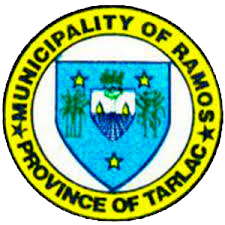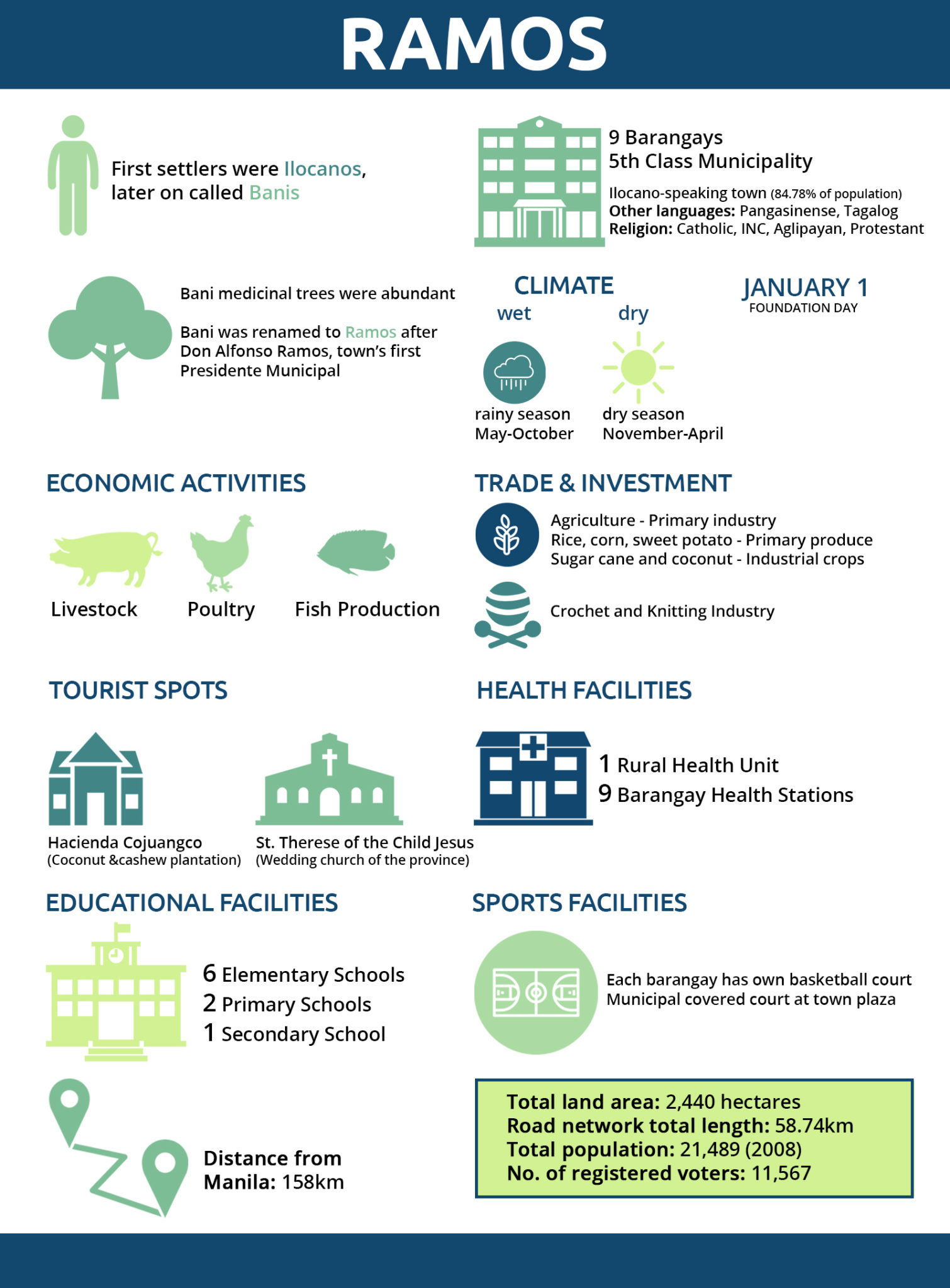TRADE AND INVESTMENT
Agriculture is the primary industry in the town. The primary agricultural products are rice, corn, sweet potato, peanut, legumes, fruit and leafy vegetables. Sugarcane and coconut are the industrial crops. Its agricultural production covers an area of about 2,195 hectares of fertile lands.
Livestock, poultry and fish production are other economic activities in the municipality. Ruminant animals like carabao, cattle and goat are raised with agricultural crops. Backyard swine raising are raised through self-finance, with only very few raising commercially. Poultry raising is on organic chicken with only very rare on broiler raisers. Fishery areas are located in low lying areas of the town and are only productive during wet season. There are very few fish producers in the town.
Crochet and knitting industry is also a growing business in the community. One of the objectives of the present administration is to make the whole municipality of Ramos the “CROCHET COUNTRY OF TARLAC”.
TOURISM SITES AND DESTINATIONS
- Saint Therese of the Child Jesus
(The “WEDDING CHURCH” of the Province)
Location: Poblacion Center, Ramos, Tarlac
- Hacienda Cojuangco (Cojuangco State)
Location: San Raymundo, Ramos, Tarlac
Description: The coconut and cashew plantation are the attractions of Hacienda Cojuangco. The place is perfect for group picnics and adventures.


